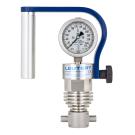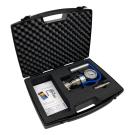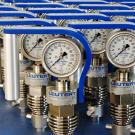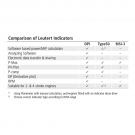Peak Pressure Indicator
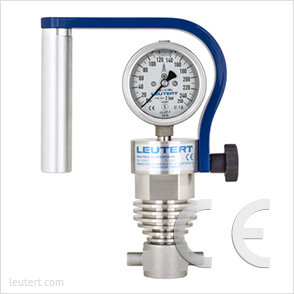
The MSI-3 peak pressure indicator measures the maximum cylinder pressure of large two- and four-stroke engines. It features a shock absorber integrated into a stainless steel body, a union nut, a pressure gauge and a handle, all safely stored in an instrument case.
The peak pressure indicator is attached to the engine via an indicator valve with the union nut. The indicator valve is part of the engine. When the indicator valve is opened, the pressure in the combustion chamber is routed to the pressure gauge via the shock absorber. The shock absorber reduces vibration and slows down the pressure drop once the pressure in the combustion chamber decreases, therefore the maximum pressure can easily be read on the pressure gauge.
Each cylinder of the engine is measured individually.
The Leutert peak pressure indicator MSI-3 is designed to withstand the high pressures and temperatures generated in modern internal combustion engines such as marine diesel and gas engines. Its robust design makes it insensitive to vibrations and requires very little maintenance. This engine indicator is characterized by simple operation and high instrumental precision in all speed ranges.
For smaller engines with limited installation space, we recommend the peak pressure gauge MSI-4.
Leutert Peak Pressure Indicators carry the CE mark. It signifies that the Peak Pressure Indicator has been assessed to meet high safety, health, and environmental protection requirements.
Features of the peak pressure indicator MSI-3
- CE marking
- Measuring range up to 300 bar
- High accuracy in all speed ranges
- Simple and easy operation
- Extremely robust, low maintenance
- Insensitive to vibration
- Steel pressure gauge in safety design
| Max. peak pressures | 20 MPa, 25, MPa, 160 bar, 250 bar, 300 bar (others upon request) |
| Engine range | up to 2,500 rpm |
| Permissible temperature | ambient -20 to 60°C |
| Error margin | ± 1.6 % |
| Dimensions c/w box | 38 x 29 x 10 cm |
| Weight | 1.8 kg without box, 2.6 kg with box |
| Standard connection | W 27 x 1/10” |
